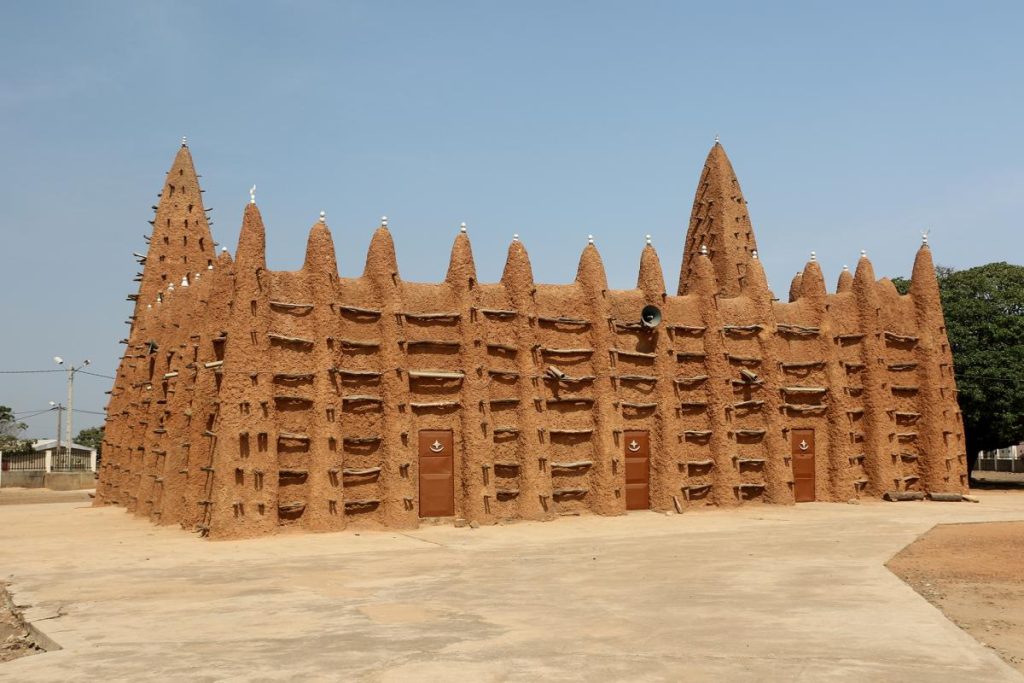Some of the most historic mosques in the world are located in northern Cote d’Ivoire. Eight Magnificent Sudanese-style mosques are based in Tengrela, Kouto, Sorobango, Samatiguila, Nambira, Kong, and Kaouara. They are characterized by earthen construction, projecting frameworks, vertical buttresses crowned with pottery or ostrich eggs, and high or low minarets in the form of a truncated pyramid. The architectural style of the mosques is closely related to the history of the great empire of Mali. This architecture was first announced by Emperor Kankan Musa on his return from the Mecca pilgrimage in 1324. It was from the 15th century that this style spread southwards, from the desert regions to the Sudanese savannah. In Soudan, the monuments adopted lower forms with stronger buttresses, to meet the demands of a more humid climate.
These mosques hold a great historical and religious value as they tell the story of the trans-Saharan trade which helped with the spread of Islam and Islamic culture in the region. They have been able to survive over the years thanks to a strict and rigorous traditional maintenance by the communities to which they belong, who have safeguarded their original functions as places of prayer and gathering.

